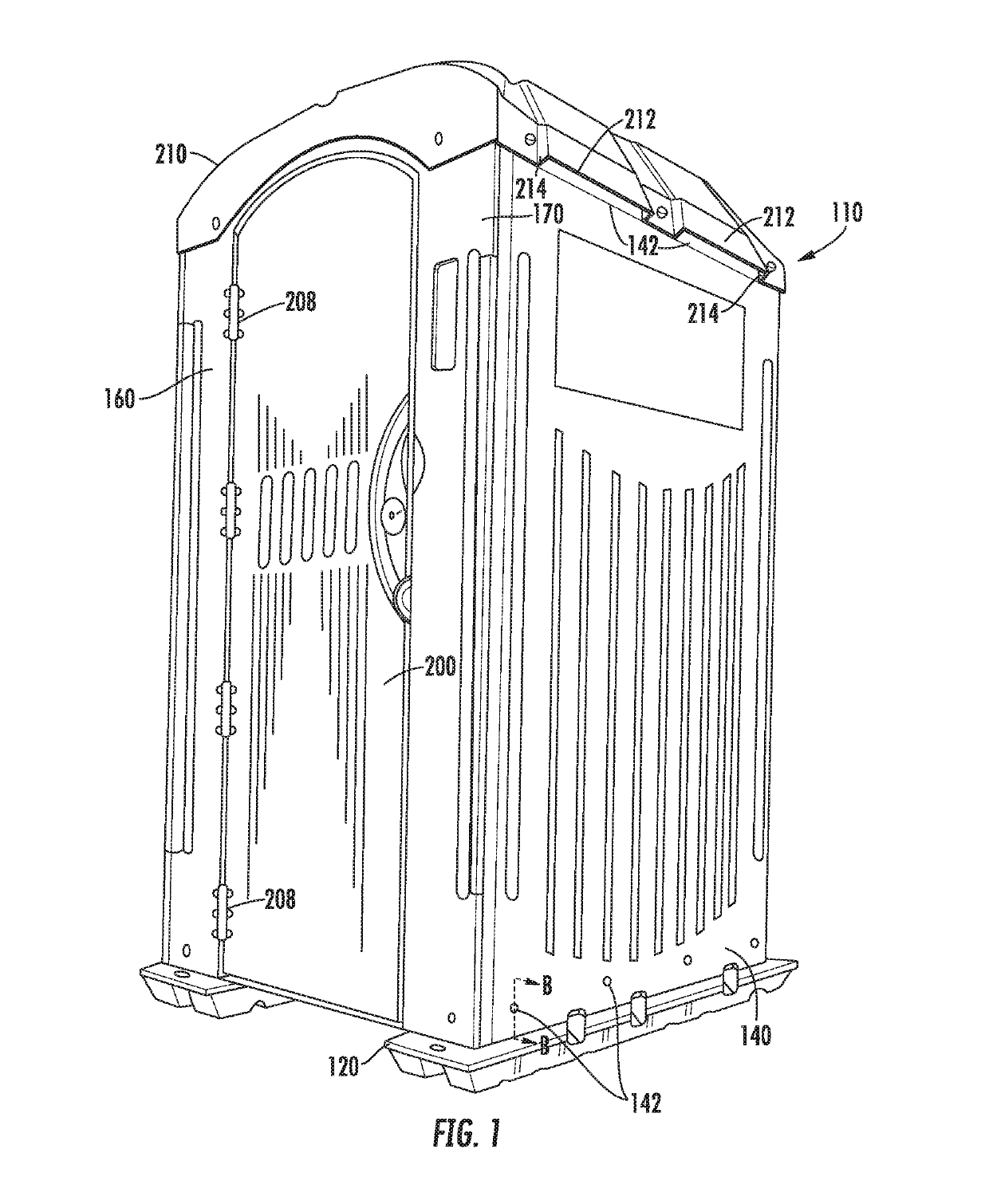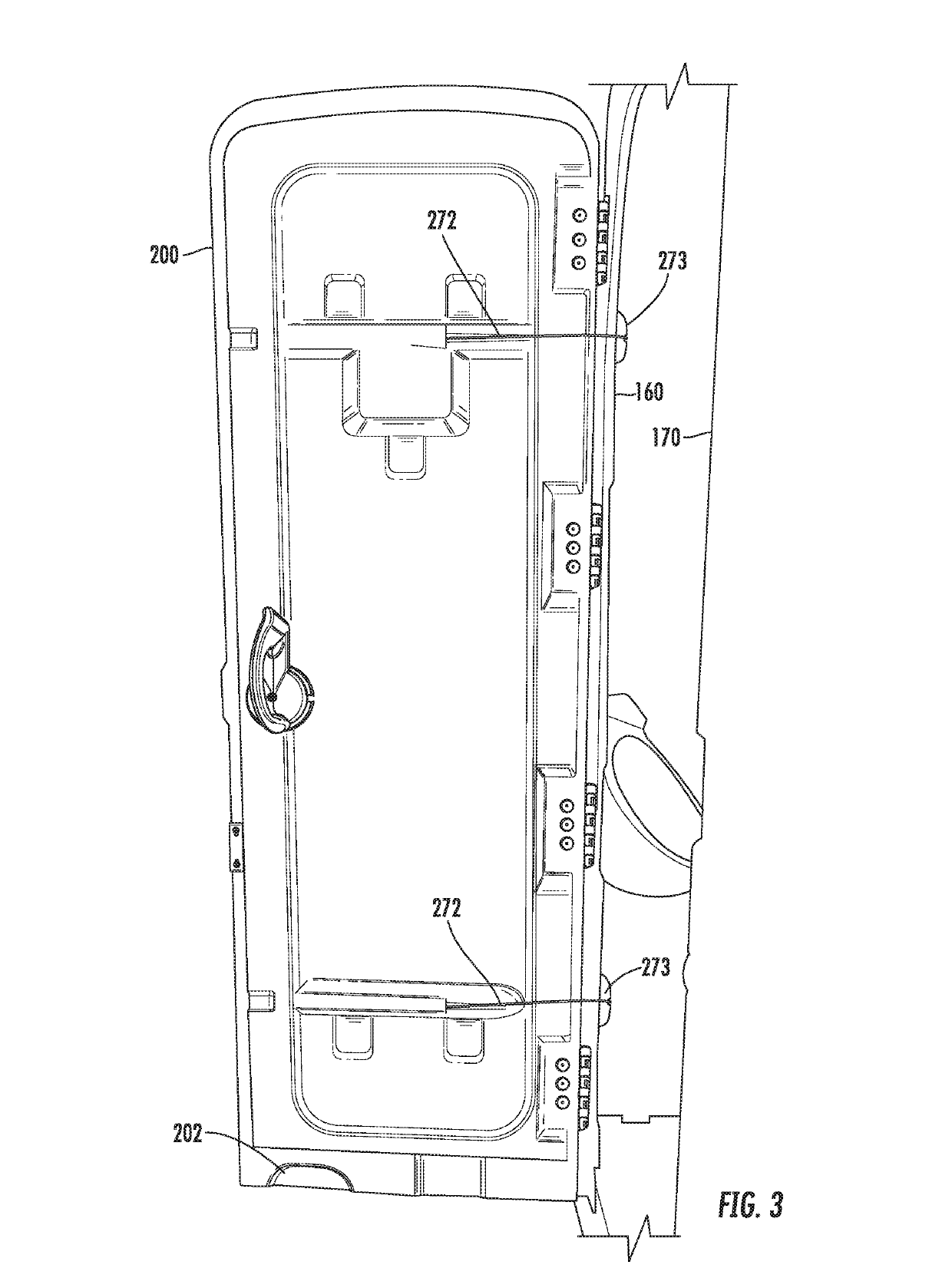Portable restroom assembly with hands-free door opening system
a technology of hand-free door opening and portable restroom, which is applied in the field of portable restrooms, can solve the problems of noxious odor, limited interior space of portable restrooms, and inability to produce a screen with ventilation performance comparable to other methods, and achieves the effects of convenient personal carrying in objects, improved ventilation, and cost-effectiv
- Summary
- Abstract
- Description
- Claims
- Application Information
AI Technical Summary
Benefits of technology
Problems solved by technology
Method used
Image
Examples
Embodiment Construction
[0079]Referring to the Figures, an improved portable restroom is provided. The portable restroom, as shown in FIGS. 1-2, has one or more advantageous features which provide, for example, improved user experience and comfort as well as improved construction and durability. The portable restroom assembly 110 generally includes a base 120 having a floor portion 122, a rear wall 130, a left side wall 140 and a right side wall 150 which may be identical, a door jamb having a hinge side 160 and a latch side 170, a door 200, a vented roof 210, a toilet module 220 with a holding tank 130. The portable restroom assembly 110 may also include indicia on the door of the restroom or another surface of the restroom to inform and encourage users to open the door by inserting the toe of their shoes into the toe cavity behind the door portion with indicia to pull the door open from outside the portable restroom in a “no hand touch” manner. The portable restroom assembly 110 is generally constructed ...
PUM
 Login to View More
Login to View More Abstract
Description
Claims
Application Information
 Login to View More
Login to View More - R&D
- Intellectual Property
- Life Sciences
- Materials
- Tech Scout
- Unparalleled Data Quality
- Higher Quality Content
- 60% Fewer Hallucinations
Browse by: Latest US Patents, China's latest patents, Technical Efficacy Thesaurus, Application Domain, Technology Topic, Popular Technical Reports.
© 2025 PatSnap. All rights reserved.Legal|Privacy policy|Modern Slavery Act Transparency Statement|Sitemap|About US| Contact US: help@patsnap.com



